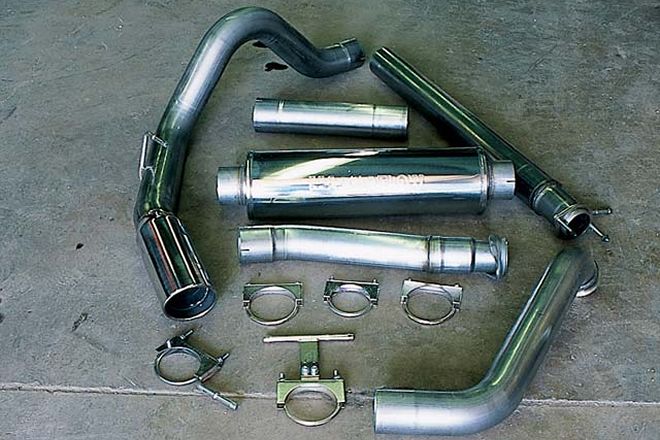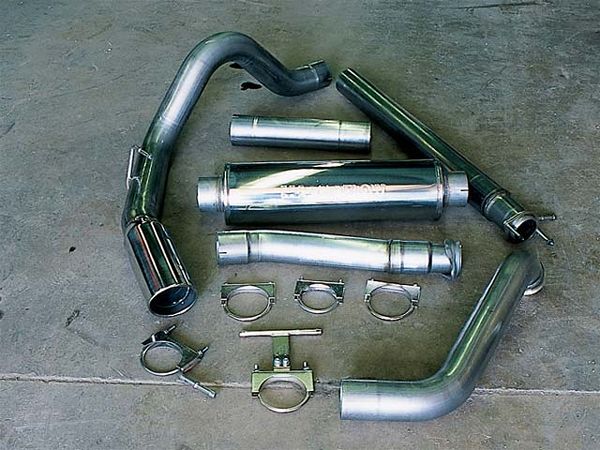
 Ken Brubaker
Senior Editor, Four Wheeler
Ken Brubaker
Senior Editor, Four Wheeler
 1. Magnaflow offers a number of different kits for diesel-powered trucks, but the complete Turbo-Back kit for Power Stroke engines is the hot ticket for increased performance. The kit comes with mandrel-bent stainless-steel pipes, including a 3 1/2-inch-diameter turbo downpipe, a 3-inch collector (Magnaflow says this piece is critical to creating enough backpressure so the turbo can spool up), new 4-inch-diameter pipes from the collector rearward, a 7-inch-diameter polished stainless-steel muffler, a 5-inch polished stainless-steel tip, all clamps and hangers and detailed instructions.
1. Magnaflow offers a number of different kits for diesel-powered trucks, but the complete Turbo-Back kit for Power Stroke engines is the hot ticket for increased performance. The kit comes with mandrel-bent stainless-steel pipes, including a 3 1/2-inch-diameter turbo downpipe, a 3-inch collector (Magnaflow says this piece is critical to creating enough backpressure so the turbo can spool up), new 4-inch-diameter pipes from the collector rearward, a 7-inch-diameter polished stainless-steel muffler, a 5-inch polished stainless-steel tip, all clamps and hangers and detailed instructions.
The latest crop of diesel engines is more powerful than ever before. Even bone stock, these engines create remarkable horsepower and torque in packages that include reliability, good fuel mileage and long service life. Still, there's room for improvement. One area that can be easily upgraded with substantial benefits is the exhaust system. Magnaflow Performance Exhaust offers a number of systems for the most popular diesel engines, including the Cummins, Duramax and Power Stroke, and these high-quality, free-flowing systems help create power gains you can feel.
Attitude Performance in Elk Grove Village, Illinois, installed a complete Magnaflow Turbo-Back system onto our '02 extended cab Ford F-250 Super Duty in less than an hour. We were very impressed by the quality of the Magnaflow components as well as their seamless integration onto our truck. All of the pipes are mandrel-bent stainless steel tubing for optimum flow. The 7-inch-diameter stainless-steel muffler is designed to provide just enough backpressure to keep the engine happy while not being a hindrance to exhaust flow. The system also includes a 5-inch-diameter polished stainless-steel exhaust tip for good looks, various types of high-quality clamps needed for installation and detailed instructions.
Magnaflow tested a Turbo-Back-equipped Power Stroke diesel on a Mustang chassis dyno and the results indicated that it improved the Power Stroke's rear-wheel horsepower by a respectable 18.2, from 190.6 to 208.8 at 3,000 rpm, and it improved torque by an impressive 51.3 lb-ft from 351.8 to 403.1 at 2,700 rpm. We noticed the increased torque immediately after we completed the install as we pulled a 6,000-pound Jeep/trailer combination. With the new system in place, the Power Stroke seemed to have more power throughout the entire rpm range with a seemingly stronger pull at the higher rpm. The Magnaflow Turbo-Back system comes with a lifetime warranty and is a functional and quality addition to today's powerful diesel engines.




